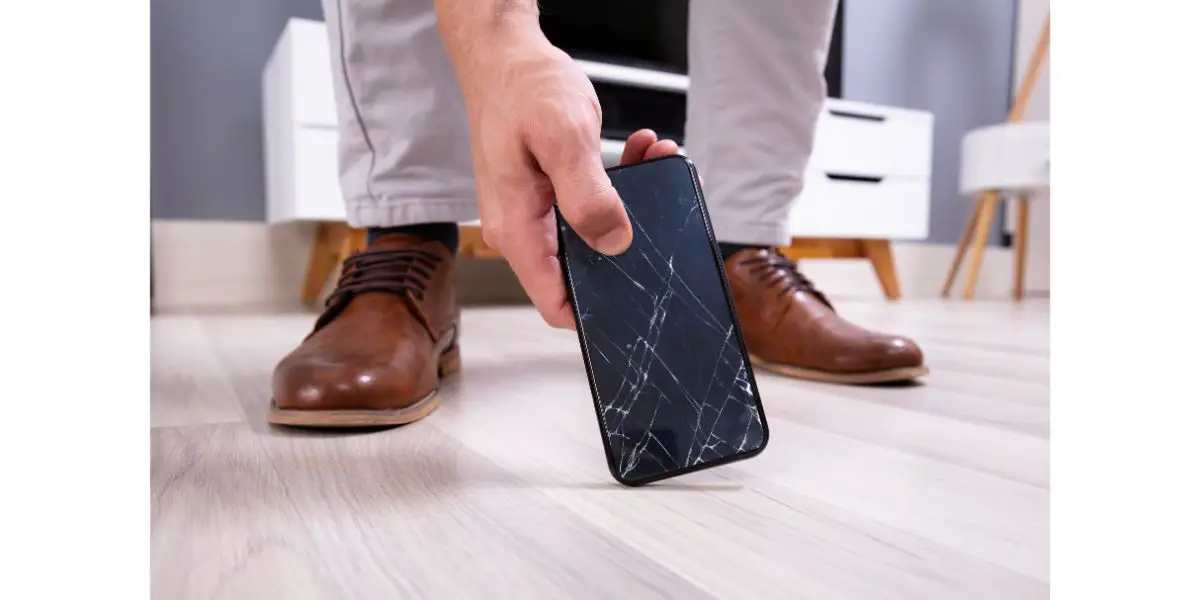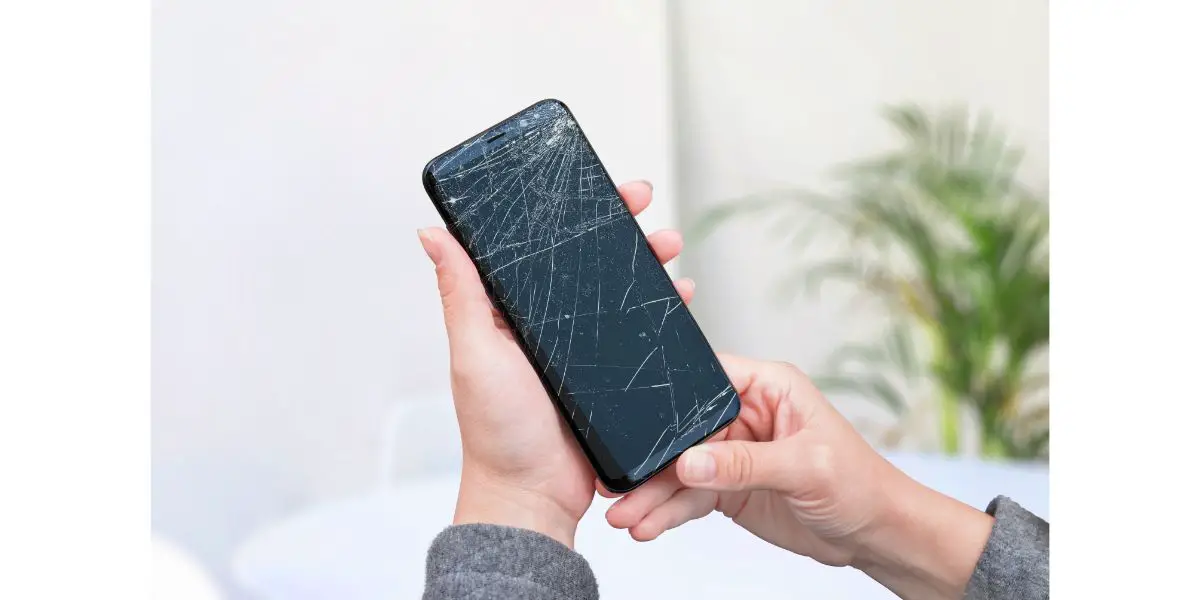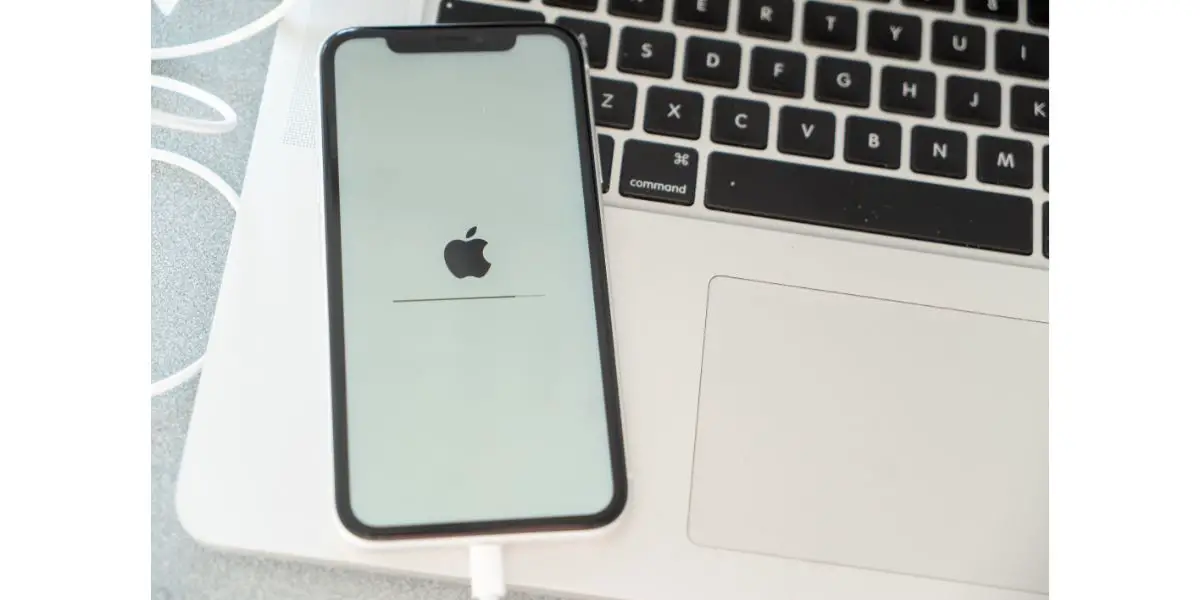Disclaimer: This post may contain affiliate links, meaning we get a small commission if you make a purchase through our links, at no cost to you. For more information, please visit our Disclaimer Page.
The smartphones that you use nowadays are amazing devices that allow you to do so much more than just communicate. Unfortunately, they are also quite fragile compared to the previous generations of phones.
If your phone falls from a considerable height, it may experience damage and several issues that may cause it not to turn on; you need to know what to do in this particular scenario.
Table of Contents
1. Charge Your Phone
It happens to everyone; your phone slips from your hand or your bag and falls to the ground with a clattering sound, and you hope it’s still intact. Unfortunately, sometimes the phone doesn’t survive the fall without damage. If you pick it up and see a pitch-black screen, you may start thinking about all the possible ways it can be damaged and how to fix it.
However, it might be possible that your phone’s battery is dead, in a rare but not impossible coincidence. The first thing you should do is to try charging your phone to ensure it’s not a dead battery causing your phone to not work.
If you see the typical signs of life that appear once you connect your phone to a charger, you can let the device recharge completely and then see if everything works as it’s supposed to.
2. Call Your Device
If your phone doesn’t show signs of life even after being charged, you may be dealing with an issue resulting from the fall. You should start considering all the possible problems that the fall might have caused to your phone.
Before you start thinking your phone is completely dead, consider the possibility that it might just be the phone screen that is not working. If it’s an issue with the screen, your phone might be functioning as it usually does; you just won’t be able to see it.
A very easy way of confirming this particular issue is to call your number. If it’s solely a screen issue, you’ll be able to hear your phone ring when you call your number. Of course, you won’t be able to see anything on the screen, but the fact that it’s receiving signals should tell you that it’s not entirely broken.
If the phone rings, you’ll know that the screen is the problem, and you should take your phone to an expert to repair or replace the screen.
3. Check if Your Phone Is Recognizable on Other Devices
Calling your phone is a good way to determine if the phone is still working even though the screen is blacked out. However, calling it would not make a difference if your phone is on silent mode and the haptics are deactivated. Is there another way of finding out if the rest of your phone is working?
You can try checking other devices and see if they recognize the presence of your phone in any way. For instance, check if another phone or computer can recognize the Bluetooth signal coming from your phone. Your phone should appear on the list of devices on the other device, which will tell you that it’s still working even though you can’t see anything on the screen.
What if your phone doesn’t have Bluetooth enabled? As long as your phone is connected to WiFi or cellular data, there are ways of discovering it. However, it might be a bit more complicated since you may need to get a device that will make discovery easy, like an RF scanner.
You can also connect your phone to a computer using a USB cable and see if it appears on the device. For Windows laptops, you can check under the Devices section in My Computer. For Macbooks, go to Finder, and the phone should appear on the toolbar.
If your iPhone or Android is recognized as a device on your computer or scanner, it might not be as broken as you think. These signs of life mean that your phone is still working somewhat, despite the issues after the fall. You can try different ways of restoring your phone to eliminate any problems caused by the fall.
4. Reset Your Phone
Sometimes the fall can cause temporary issues that may be resolved once you reset your phone. Resetting removes glitches that cause different types of problems, including your phone not turning on after falling from a certain height.
There are different ways of resetting your phone, depending on how serious the issue is and how much information you’re willing to sacrifice. The easiest way to reset your phone is to do it in Settings, but if your phone is not turning on, this method is impossible.
Hard Resetting Your iPhone
Even though your phone doesn’t work at all, you can still try to hard reset it using the right buttons. If you have an iPhone, you do a hard reset in a few simple steps:
- Press the Volume Up button and then release it.
- Immediately afterward, press the Volume Down button and release it.
- Finally, press the Power button and hold it.
- Keep holding the Power button until you see the screen light up.
- Check if your phone works as usual.
Hard Resetting Your Android Phone
If you have an Android, the reset method will depend on your particular smartphone brand. For Samsung, it’s exactly the same as Apple. For Google Pixel phones, you should press the Power and Volume Down buttons and hold them for 10 to 12 seconds.
5. Put Your Phone on DFU Mode
This is a solution that only works with iPhones, so if you have an Android, skip to the next step.
DFU means Device Firmware Update and is a more advanced method of restoring information than a simple reset. DFU deletes and then restores both software and firmware on your iPhone. As you can imagine, this type of reset is deep and all-encompassing, so you should be prepared to lose your data if your phone isn’t backed up to the Cloud or your computer.
To put your iPhone on DFU mode, you should:
- Connect your iPhone to your Macbook or laptop.
- Go to Finder or iTunes.
- Press and hold both the Power button and the Volume Down button.
- Wait for five seconds and then release the Power button while still pressing the Volume Down button.
- iTunes will let you know that your iPhone is in DFU mode; follow the instructions to restore the firmware and software.
- After following the instructions, check if your phone works.
6. Flash the Phone Firmware
What we described above is essentially flashing the iPhone’s firmware to get rid of any bugs or glitches and restoring it. The same can be done with Android phones as well, but it may be a bit more complicated than with an iPhone.
There are several different brands of Android devices, and each has its own way of removing and restoring the phone’s firmware. Depending on the brand, you may need to install special software to be able to complete the process.
For instance, if you’re using a Samsung Galaxy phone, you need to download a particular program on the computer to which the phone will be connected to help you flash the firmware. Typically, a software called Odin is considered the best for this particular purpose.
Unlike putting your iPhone on DFU mode, flashing the firmware on your Android phone is a much more complicated process that takes more time and requires many more steps. You should download programs into your computer, hard reset your phone and then select the stock firmware you want to flash.
There are a lot of other steps in this process, so try to learn everything beforehand so that you don’t get stuck mid-way. If you do get stuck, don’t try to improvise. Call an expert or contact support to take you through the rest of the steps. If you’re not sure where to begin, take your phone to someone who knows how to flash the firmware of an Android phone.
7. Do a Factory Reset
Besides the hard reset, you could also try a factory reset, which can return the phone to its original settings. A factory reset will wipe everything on your phone, including contact and photos, so only try this method if you have a backup or you don’t have much to lose.
Factory Resetting Your iPhone
To reset your iPhone to its factory settings:
- Connect your phone to your laptop or Macbook.
- Go to Finder or, alternatively, iTunes.
- See if your phone appears on the toolbar.
- If it does, select Restore iPhone.
- Your phone will be restored to factory settings and may start working again.
Factory Resetting Your Android Phone
To reset your Android phone to its factory settings, you need to try doing it on your phone rather than on a computer. Depending on the particular brand, you’ll need to press and hold certain buttons and wait for a recovery menu to appear.
For instance, the recent Samsung Galaxy phones require you to press two or three buttons, depending on the model and then work directly on a menu that will appear on the screen. To reset your Samsung Galaxy phone to factory settings:
- Press and hold the Power, Volume up, and Bixby buttons simultaneously.
- Hold all three buttons until a menu appears.
- Navigate the menu using the volume buttons if you want to go up or down.
- Go to Wipe data/factory and select it.
- Your phone will go into Recovery Mode, which means all the information will be wiped, and the factory settings will be restored.
- Try to turn your phone on and see if it works.
If your Samsung phone doesn’t have a Bixby button, press the Volume Up and the Power buttons for a few seconds until you see the menu. This method should work with the latest Samsung phones that only have volume and power buttons.
Factory resetting your phone is a last resort move, so make sure any other potential fixes and ways of restoring are impossible before you try it. This method essentially deletes all the data stored in your device.
8. Contact Support
If none of the above signs work, or if you want an opinion before you even start trying different fixes, you can contact the support team for your phone. You can find contact numbers or emails online for the particular type of phone that you have. Moreover, most brands also offer live chats where you can send pictures and explain everything in detail.
Once you get in contact with someone, you can explain exactly how the phone fell and what you did to try to fix it. The support team can give you more information about the potential problem and guide you through some ways of fixing it.
9. Take Your Phone to a Specialist
While the support teams will do everything they can, they can’t solve a more serious issue with your phone remotely. You may also have difficulties following instructions and figuring out the problem on your own.
If you’ve tried everything and your phone is still not working, or if you just feel out of your depth, you can take your phone to a specialist that will try to fix your phone.
Some professionals have workshops and handle different types of phones, but you can also go to an electronics store; you can be sure that they have an in-house tech expert who will know what to do with your phone.
10. Replace Your Phone
If you and tech experts have tried everything and the phone is still not working, it might be time for you to get a new phone. Depending on the problem with your current phone, you may be able to salvage some information. If you have a backup, you don’t need to do anything extra, connect the new phone and restore the data.
To find a replacement for your phone, you can do some research to choose the best option for you, be it an iPhone or an Android. Keep in mind to check reviews and see how well they perform and how durable they are.
Once you get the new phone, make sure to back your information up continuously and buy a protective case to avoid a similar problem in the future.
Conclusion
Smartphones are pretty fragile nowadays, so it’s no surprise that they can show the black screen of death after falling from a certain height. However, you shouldn’t despair and run immediately to the store for a new one.
Try to call your phone, see if it’s recognizable on other devices, reset it using different ways, or contact an expert who may advise you what to do or even fix it.



